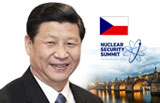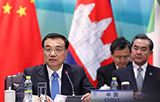LA museum recreates China's caves
By Associated Press in Los Angeles (China Daily) Updated: 2016-05-07 08:33
|
Chief curator of the Getty Research Institute Marcia Reed on May 4 tours a full-scale, hand-painted replica of the Dunhuang Grottoes on display at the Getty Museumin Los Angeles. Photo / AP |
For a thousand years, China's Cave Temples of Dunhuang were a popular traveler's resting stop, marketplace and religious shrine on the fabled Silk Road. Now, they are coming to Los Angeles, both in spirit and reality.
In an exhibition curators say is unprecedented, three full-scale, hand-painted replica caves have been erected on the Getty Center museum's hilltop campus overlooking LA.
Nearby, in an adjacent gallery, the museum has assembled more than 40 spectacularly preserved and priceless artifacts taken from one of the caves, and in still another gallery visitors can take a 3-D virtual reality tour of on an actual cave in China, this one filled with life-size sculptures of the Buddha and his entourage.
"We're trying to help the public understand what this place is, where it is and why it's important," Tim Whalen, director of the Getty Conservation Institute, said during a recent tour of Cave Temples of Dunhuang: Buddhist Art on the Silk Road, which opens on Saturday.
"By any standard," he said, "Dunhuang is one of the most important heritage places in the world."
Indeed, along with the Great Wall and the Forbidden City, Dunhuang's more than 450 Mogao Caves, as they are also known, were among the first Chinese sites recognized by United Nations' World Heritage Center in the 1980s.
But tucked away on the edge of the Gobi Desert, more than 1,100 miles from Beijing, they are not the easiest place in China to get to today.
That wasn't the case from the fourth to the 14th centuries, when the Silk Road was teeming with travelers.
"People were moving back and forth," he said. "There are documents of Jewish prayers and Christian prayers here."
Also displayed are sculptures of European-looking people.
Perhaps the most priceless item on display is a scroll of Buddhism's "diamond sutra", dated in 868. Discovered in one of the caves in 1907, it is believed to be the world's oldest printed book. In the West it is thought that Johannes Guttenberg invented printing.
"But we should know that in 868, a complete printed book was made in China in woodblock," said Marcia Reed, the Getty Research Institute's chief curator.
She points to Miraculous Image of Liangzhou, a stunning, 1,300-year-old silk tapestry, before settling on another ninth-century scroll, The Magic Competition Between Sariputra and Raudraska.
Two of the three Getty caves were built from the ground up for the exhibition by artists who came to Los Angeles from China's Dunhuang Academy, which collaborated with Getty's institutes to produce the exhibition.
The third cave was moved intact from the academy's own museum. The display runs through Sept 4.








